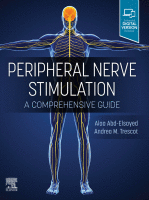Physical Address
304 North Cardinal St.
Dorchester Center, MA 02124

You’re Reading a Preview Become a Clinical Tree membership for Full access and enjoy Unlimited articles Become membership If you are a member. Log in here

Clinical Presentation The vagus nerve is the largest cranial nerve. It extends from medulla to colon, extensively supplying sensory and autonomic innervation to various thoracic and abdominal viscera. It is involved in the cardiac, pulmonary, immune, gastrointestinal, and endocrine systems.…

Introduction Clinical presentation In 2013, 1.7% of the US population, or 5.4 million people, were living with paralysis. The leading causes of paralysis were stroke and spinal cord injury (SCI). Limitations brought on by any degree of paralysis significantly impact…

Clinical Presentation Gastric stimulation is a treatment option typically reserved for refractory cases of gastroparesis. Estimates from Minnesota in 2007 suggest that the prevalence of confirmed gastroparesis per 100,000 people is 37.8 for women and 9.8 for men. However, estimates…

Introduction The purpose of this chapter is to provide an overview of peripheral nerve stimulation for the treatment of overactive bladder (OAB) syndrome. OAB is common among adults worldwide, with a substantial psychological and economic burden on society. Symptoms typically…

Introduction Peripheral neuropathy is among the most common reasons patients seek out medical care. The overall prevalence in the general population is estimated to be 2.8% and increases to 8% in those older than 55 years of age. There are…

Introduction It is estimated that there are currently 2 million amputees living in the United States, with nearly half of these patients suffering from postamputation pain (PAP). With approximately 185,000 new amputations occurring each year, the number of amputees is…

Introduction Over 16 million Americans between 18 and 50 years of age are impacted by chronic pelvic pain. This pain affects sexual intercourse, relationships, sleep, the ability to sit and walk, and work productivity, and is associated with depression, anxiety,…

Introduction Low back pain is an extremely common presenting complaint that occurs in upwards of 80% of the population. Chronic back pain (>12 weeks’ duration) develops in a small percentage of patients. The first step in the treatment of low…

Clinical Presentation Postherpetic neuralgia (PHN) is the most common complication of the varicella zoster virus (VZV) infection, also known as herpes varicella zoster (HVZ). PHN is a long-term, debilitating complication that occurs due to reactivation of VZV. The clinical terminology…